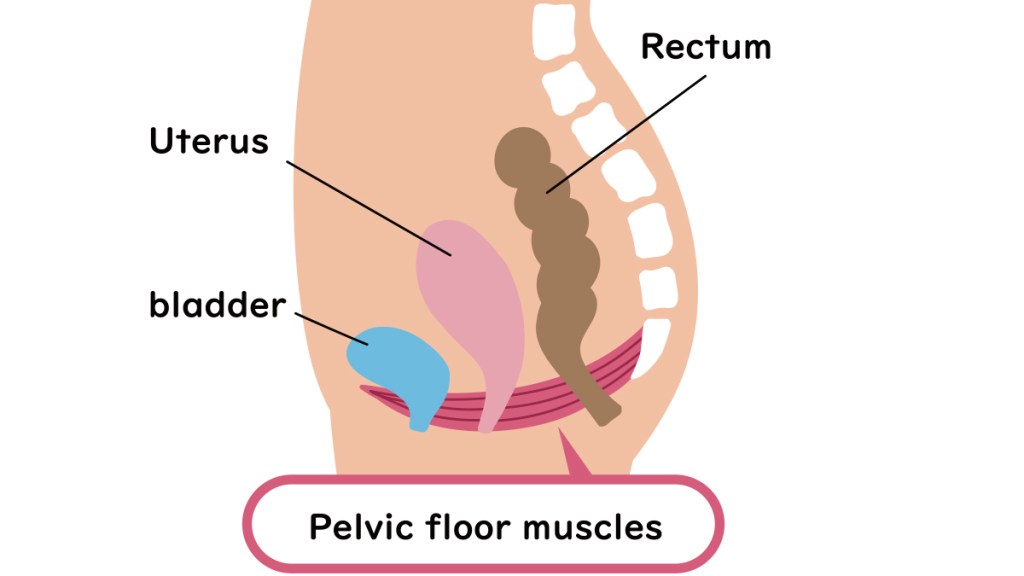“Pelvic Floor Massage Stopped My Embarrassing Bladder Leaks — For Good!”
A pelvic floor therapist reveals why Kegel exercises may do more harm than good for some women

The prevailing understanding among doctors is that stress incontinence — or the involuntary leakage of urine that plagues 1 in 3 women and occurs when there is increased pressure or stress on the bladder and pelvic muscles from laughing, sneezing, coughing or even standing up — is often the result of the weakening of the pelvic floor muscles. As such, doctors traditionally suggest strengthening the pelvic floor muscles that support the urinary system with Kegel exercises. While these exercises are indeed helpful for many women, more recently, physical therapists specializing in rehabilitating the pelvic floor and pelvic floor massage have discovered that Kegels are not always the best treatment — and can even make leaks worse.
“Either the pelvic floor is weak or it’s too tight, both of which can trigger leaks,” explains says Lauren Garges, PT, WCF, a physical therapist certified as a pelvic floor clinical specialist at St. Luke’s University. “Kegels are effective if muscle weakness is the issue, but they do more harm than good if the cause is muscle tightness — you can’t tighten already-tight muscles, and many doctors don’t understand this and just tell their patients to do Kegels.” (Click through to learn more about bladder spasms that can cause leaks.)
Tight muscles are overworked muscles, which brings on muscle fatigue that makes leaks more likely, Garges explains. “For those patients, internal therapy or pelvic floor massage is sometimes needed to release tight muscles or the trigger points causing the tightness.”
This was the case for PeggySue Wells, 65, who after giving birth in her 40s, began experiencing stress incontinence, including embarrassing leaks while doing the most mundane tasks. Trying different strategies including Kegels, the single mom had no luck healing her incontinence — until her doctor made a recommendation for an internal therapy called pelvic floor massage therapy. (Click through to learn how taking care of your pelvic floor can ease constipation, too.)
Here, Wells shares her healing journey and Lauren Garges reveals ways to determine whether pelvic floor massage is right for you and how to find the best certified therapist.
How stress incontinence took over PeggySue’s life
PeggySue Wells loved playing with her kids, and flashed a big smile and waved to them as they squealed with joy while bouncing on the trampoline. Seeing her brood of seven playing happily made her heart full, but her contentment was tinged with frustration as, just minutes before, her kids had begged her to join on the fun…and, like always, PeggySue was forced to turn them down. Jumping on the trampoline was a surefire “whoopsie” waiting to happen.
It’s time to do something about this once and for all, she thought to herself. I don’t want to hold myself back anymore because of urinary incontinence. Not when it comes to playing with my kids, laughing at a joke or living my life!
She had been 41 when it had all began, after her youngest daughter was born. Weighing in at ten pounds, her last bundle of joy was a dream baby — but she unfortunately brought on a bothersome issue for PeggySue: involuntary bladder leakage to the point where she couldn’t sneeze without fear of an accident.
For the next few years, and after becoming a single mom, PeggySue didn’t have time to despair over the issue of pelvic floor dysfunction, no matter how inconvenient. But when her youngest grew into a toddler, she finally decided to look for a solution and put her years of embarrassing leaks and frustration behind her.
(Click through to learn how pelvic floor trouble can trigger pseudo sciatica — and find out how to cure it.)
PeggySue’s surprising discovery
From what she had heard from her own grandmother, who also suffered like PeggySue did, there was a procedure that she’d had twice called a sling surgery that helped with the symptoms.
PeggySue’s OB/GYN explained it was a common solution to urinary incontinence, but before sending her under the knife, her doctor explained that he preferred to send his patients to a pelvic floor therapist for six weeks: something, he said, that had helped a large number of women who came to him with incontinence, chronic pain, bladder dropping, uterine prolapse and pelvic discomfort find their solution.
(Click through to learn more about how pelvic floor therapy can prevent leaking during menopause)
“A pelvic floor therapist? What’s that about?” PeggySue asked. Though she’d never heard of this option, she was grateful for the referral instead of going straight to surgery, as it would mean less recovery time and more quality time with her kids. And when she discovered insurance would cover the cost of one session for six weeks, she knew she had to at least try.
What is pelvic floor massage?
As PeggySue learned, pelvic floor massage is a therapeutic technique that involves manually manipulating and massaging the muscles, tissues and structures of the pelvic floor — a group of muscles located at the base of the pelvis, forming a hammock-like structure that supports the bladder, uterus and rectum.

Pelvic floor massage is performed by trained healthcare professionals, such as physical therapists or pelvic floor therapists, and is done both internally (through the vagina) and externally with either their hands or certain tools. The goal is to help improve the function, flexibility and strength of the pelvic floor muscles, as well as to alleviate any tension or discomfort in the area.
Walking into her first pelvic floor therapy appointment, PeggySue felt a twinge of nervousness and awkwardness at the thought of an “internal” massage …until she and her therapist established her treatment plan and got to work.
Right off the bat, PeggySue’s therapist’s warm, friendly demeanor put her at ease. And before she started, she helped PeggySue feel comfortable, informing her about what was going to happen in their half-hour session together.
“’Basically, I’m going to relieve tension and put your pelvic organs that were displaced after pregnancy back where they belong through an internal massage with my finger,” she explained. “There’s no exercise on the planet that will do that for you!”
As the appointment wound on, the pair chatted easily while the therapist located tender places and muscle knots inside PeggySue’s pelvis, working them back into their proper positioning with a gentle massage.
Those 30 minutes flew by, and soon, PeggySue was delighted to realize that her initial awkwardness was completely gone. By the end of the session, as her therapist demonstrated various Pilates moves that she could do for “homework” to strengthen her core muscles, PeggySue felt invigorated.
(Click through for 3 easy exercises that strengthen the pelvic floor)
Finally, she was in control — and as her therapist explained, “your core will support your pelvic organs and help control against leakage!”
Pelvic floor massage stopped PeggySue’s leaks
Within a few days of her first treatment, PeggySue couldn’t believe the difference. “How could it be that my bladder leakage has become non-existent so quickly?” she marveled, deciding to undergo the ultimate test: stepping back onto the trampoline. After her first few jumps, an amazing sense of relief washed over her — she was finally able to let go and enjoy herself without worry.
Eager to maintain her results, PeggySue kept up with her Pilates exercises at home and attended my next five sessions dutifully. And within six sessions of pelvic floor massage, her incontinence completely disappeared.
Today, PeggySue is a full-time USA Today and Wall Street Journal bestselling author of The 10 Best Decisions a Single Mom Can Make, the founder of SinglemomCircle.com. “Now, I have the freedom to live my life to the fullest with spontaneity and free of self-consciousness,” says PeggySue. “Because I no longer have incontinence to worry about, I have been able to sky dive, go line dancing, hiking and travel internationally. I am so grateful for the referral to pelvic floor therapist that spared me surgery and helped me attain these near-instantaneous results — and get my life back!”
How to know if pelvic floor therapy is right for you
To determine if pelvic floor massage is the best option for you, Garges advises seeking out a board-certified physical therapist who has additional accreditation as a pelvic floor clinical specialist (look for the initials WCS or PRPC after their name).
Pelvic floor physical therapy and massage is covered by most insurances, but Garges recommends checking with your provider, then speaking with a therapist to ask questions before booking an appointment. (Click through to see how a strong pelvic floor can also prevent back pain triggered by constipation.)
“It’s a sensitive type of therapy, and the patients should always feel in charge,” Garges says. “At the first session, we typically discuss medical history, look at her posture, hips and spine and do an inter-vaginal exam if she’s comfortable. Then we make a treatment plan, together.”
Keep reading for more effective ways to stop leaks
5 Simple Ways to Stop Bladder Incontinence in Its Tracks
Everything You Need to Know About Urinary Incontinence — And How to Beat It
MDs: How To Outsmart ‘Queefing’ — And 12 Other Embarrassing Health Symptoms
For other health journeys of real women
This 5-Minute Incontinence Cure Changed One Woman’s Life
“I Reversed a Glutathione Deficiency and Got My Energy and My Life Back!”
This content is not a substitute for professional medical advice or diagnosis. Always consult your physician before pursuing any treatment plan.
This article originally appeared in our print magazine, First For Women.
















